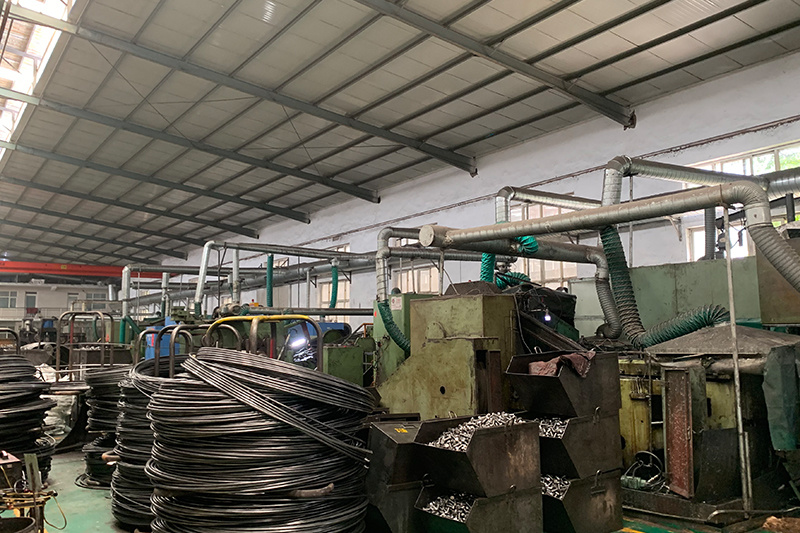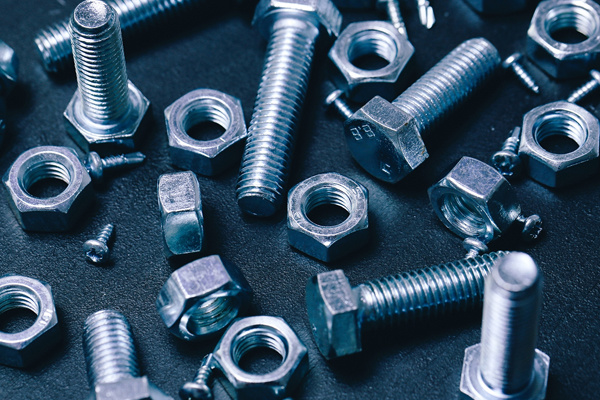language
English
العربية
বাংলাদেশ
Български
Hrvatski
Česky
Dansk
Nederland
 Esperanto
Esperanto
Slovenski
Filipino
Suomi
Français
Maori
 Shqiptare
Shqiptare
Georgian
 Euskara
Euskara
Deutsch
Ελλάδα
ישראל
इंडिया
Magyarország
Ísland
Indonesia
Irlanda
Italia
日本語
Sovensko
Հայաստան
한국
Kyrgyz
ປະເທດລາວ
 Zulu
Zulu
Latvian
Lithuanian
Luxembourgish
 Latinus
Latinus
Macedonian
Малайская
Maltese
Монгол улс
 Cymraeg
Cymraeg
ဗမာ
 தமிழ்
தமிழ்
नेपाल
Norge
ایران
Polska
Portugal
România
Российская
Србија
 Slovak
Slovak
Србија
 Slovak
Slovak
Bosanski
Slovenian
Беларус
España
Sverige
Точик
ประเทศไทย
Türk
Azərbaycan
Uzbek
 Afrikaans
Afrikaans
Việt Nam
Understanding Spring Washers: The Essential Component for Enhanced Fastening Performance
2025-08-05
Spring washers, specifically the DIN 127 variant, are engineered to provide a reliable and efficient solution for preventing loosening in bolted connections. These innovative components are characterized by their unique, curved design, which allows them to exert a spring force when compressed. This force is instrumental in maintaining tension and preventing the fastener from loosening due to vibra
Spring washers, specifically the DIN 127 variant, are engineered to provide a reliable and efficient solution for preventing loosening in bolted connections. These innovative components are characterized by their unique, curved design, which allows them to exert a spring force when compressed. This force is instrumental in maintaining tension and preventing the fastener from loosening due to vibration or thermal expansion, common issues in many industrial settings.
The primary benefit of using spring washers is their ability to compensate for initial settling of components in a joint. When a bolt is tightened, the spring washer compresses, creating a preload that keeps the joint secure. This is particularly important in environments where mechanical vibrations are prevalent, such as in machinery, automotive applications, and heavy equipment. In these situations, the risk of joint failure due to loosening can lead to operational downtime and increased maintenance costs.
When selecting spring washers, it's essential to consider material and size specifications. DIN 127 spring washers are typically made from high-quality materials, such as carbon steel or stainless steel, offering excellent durability and resistance to corrosion. The right choice of material will depend on the specific application and environmental conditions. For instance, stainless steel may be preferred in corrosive environments, while carbon steel may be suitable for indoor applications.
Installation of DIN 127 spring washers is straightforward, but it’s crucial to follow best practices to ensure optimal performance. Firstly, ensure that the washer is placed under the bolt head or nut to maximize its effectiveness. Secondly, consider using a combination of spring washers with other fasteners, such as locknuts or flat washers, to enhance the overall integrity of the joint. Regular inspections and maintenance should also be conducted to monitor the condition of the washers and the associated connections.
In conclusion, spring washers DIN 127 are indispensable components in the realm of fastening solutions. Their ability to mitigate the effects of vibrations and maintain clamping force makes them a preferred choice in various industrial applications. By understanding their design, material properties, and best practices for installation, you can harness the full potential of spring washers to improve the reliability and longevity of your fastening systems. Implementing these components in your projects will not only enhance performance but also contribute to safer and more efficient operations across your industrial applications.
The primary benefit of using spring washers is their ability to compensate for initial settling of components in a joint. When a bolt is tightened, the spring washer compresses, creating a preload that keeps the joint secure. This is particularly important in environments where mechanical vibrations are prevalent, such as in machinery, automotive applications, and heavy equipment. In these situations, the risk of joint failure due to loosening can lead to operational downtime and increased maintenance costs.
When selecting spring washers, it's essential to consider material and size specifications. DIN 127 spring washers are typically made from high-quality materials, such as carbon steel or stainless steel, offering excellent durability and resistance to corrosion. The right choice of material will depend on the specific application and environmental conditions. For instance, stainless steel may be preferred in corrosive environments, while carbon steel may be suitable for indoor applications.
Installation of DIN 127 spring washers is straightforward, but it’s crucial to follow best practices to ensure optimal performance. Firstly, ensure that the washer is placed under the bolt head or nut to maximize its effectiveness. Secondly, consider using a combination of spring washers with other fasteners, such as locknuts or flat washers, to enhance the overall integrity of the joint. Regular inspections and maintenance should also be conducted to monitor the condition of the washers and the associated connections.
In conclusion, spring washers DIN 127 are indispensable components in the realm of fastening solutions. Their ability to mitigate the effects of vibrations and maintain clamping force makes them a preferred choice in various industrial applications. By understanding their design, material properties, and best practices for installation, you can harness the full potential of spring washers to improve the reliability and longevity of your fastening systems. Implementing these components in your projects will not only enhance performance but also contribute to safer and more efficient operations across your industrial applications.
Spring Washer DIN127
RELEVANT INFORMATION
Understanding Spring Washers: The Essential Component for Enhanced Fastening Performance
Spring washers, specifically the DIN 127 variant, are engineered to provide a reliable and efficient solution for preventing loosening in bolted connections. These innovative components are characterized by their unique, curved design, which allows them to exert a spring force when compressed. This force is instrumental in maintaining tension and preventing the fastener from loosening due to vibra
2025-08-05
Understanding Flat Washer DIN125: A Comprehensive Guide
Understanding Flat Washer DIN125: A Comprehensive Guide
Table of Contents
1. Introduction to Flat Washers
2. What is DIN125?
3. Features of Flat Washer DIN125
4. Applications of Flat Washer DIN125
5. Benefits of Using Flat Washers
6. Types of Flat Washers
7. Installation and Maintenance
8. Frequently Asked Questions
9. Conclusion
1. Introduction to Flat Washer
2025-08-02
Understanding Stud Bolt DIN 938: Essential Insights for Industrial Professionals
Stud bolts, particularly those conforming to the DIN 938 standard, play a pivotal role in the industrial equipment and fastening sector. These components are designed for use in high-strength applications, making them indispensable in numerous industries, including construction, automotive, and manufacturing.
A stud bolt differs from standard bolts primarily in its design. It is a long, cylindrica
2025-07-30









